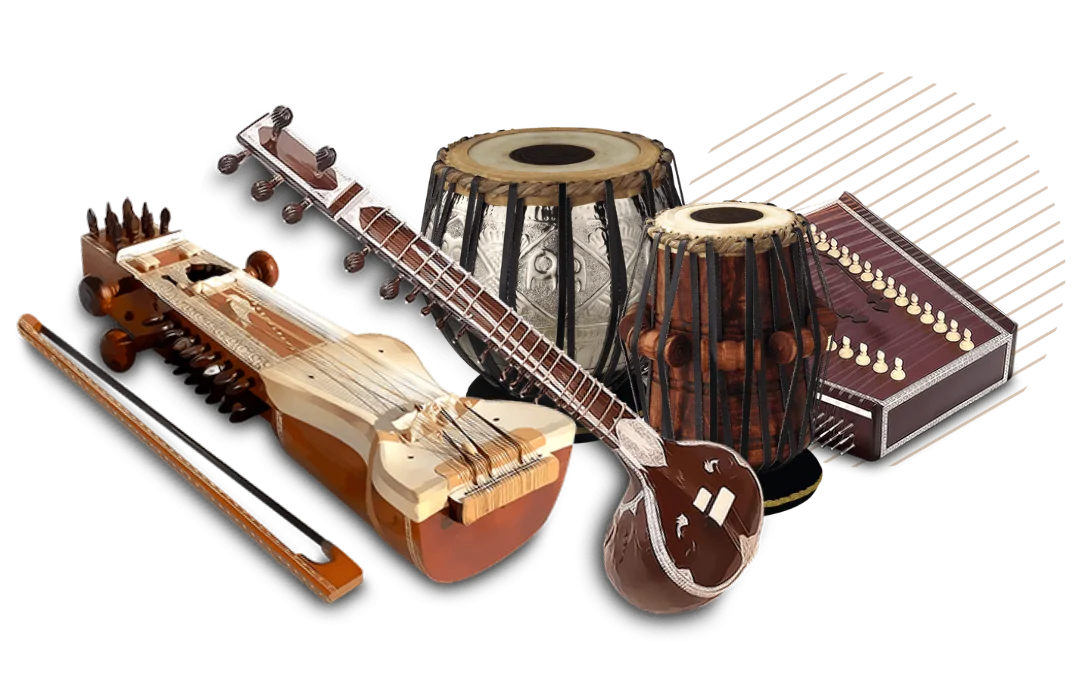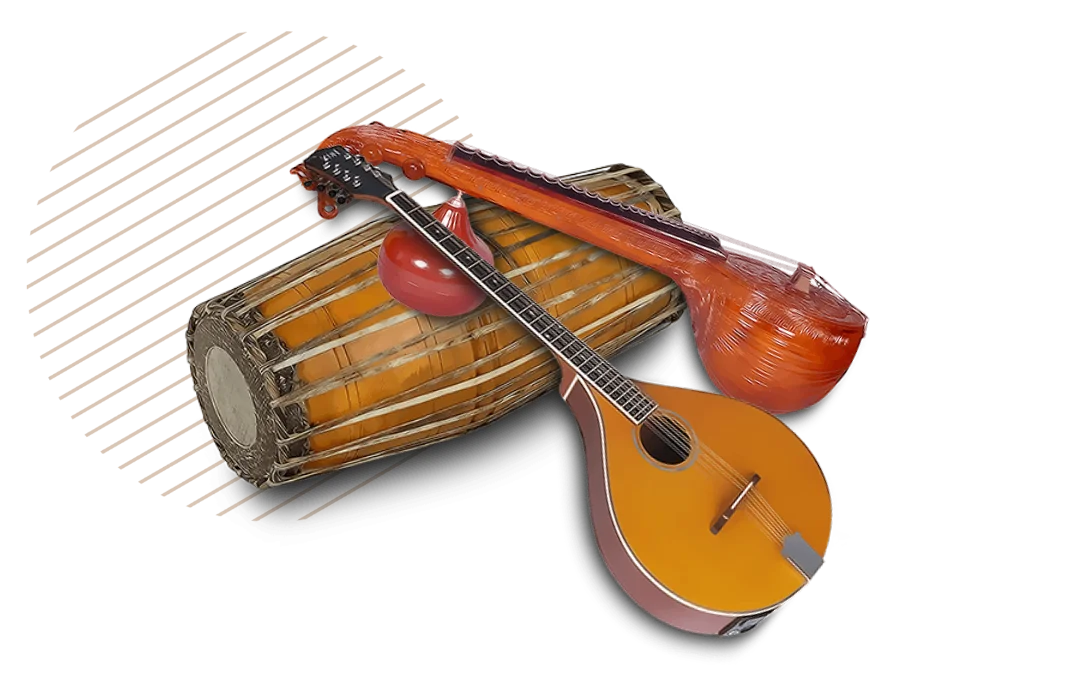The Soul of Indian Music
Indian music is more than sound—it’s a journey through time, culture, and tradition. It is classified in two ways:
- By Heritage
- By Instruments
Rooted in geography, customs, and history, carrying centuries of tradition.
Each instrument preserves the artistry of generations.
Indian Classical Music: A Timeless Legacy
The heartbeat of the subcontinent, Indian classical music is divided into two traditions:
- Hindustani (North Indian)
- Carnatic (South Indian)
A world of improvisation, where raagas evolve with emotion.
A structured, composition-rich tradition blending devotion and precision.
Once unified, these traditions evolved separately during the Mughal era. Yet, their essence remains the same—a deep connection to emotion, devotion, and storytelling through melody.
The Soulful Origins of Indian Classical Music
Indian classical music is a reflection of human emotions and spirituality. Rooted in Vedic chants, it evolved through:
- Natyashastra – Bharata Muni’s guide to musical structure.
- Sangeeta Ratnakara (13th century) – Bridging Hindustani and Carnatic traditions.
Discover how ragas evoke deep emotions in The Harmony of Melodies.

